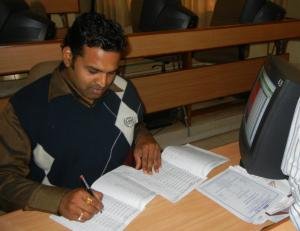 COONOOR, Tamil Nadu, India
COONOOR, Tamil Nadu, India
From his gated three story home on a hilltop overlooking this picturesque steep-sided city, Mehul Shah travels the short distance to the Coonoor Tea Trade Association auction house several times a week.
Shah is a tea exporter and commission agent, a managing partner of Sree Sai Corp., a firm named for his wife. Coonoor is not far from the tea gardens of the Nilgiris, southern India’s Blue Mountains. These misty mountains are part of the Western Ghats Range and home to pristine gardens like Havukal, Korakundah, Glendale, Craigmore, Glenmorgan, Chamraj, Tiger Hill and Dunsandale, dating to the 1850s.
A million pounds of tea are auctioned weekly during the slow season and twice that at the peak of trading in the auction’s modern office building. The structure is topped with a satellite dish on which a monkey perches, a reminder of how near the equator lie India’s southern gardens. Unlike Assam and storied Darjeeling, harvesting here is year round. The majority of tea is grown by tribal Kota, Toda and Badagas -- agrarian people herding cattle and raising food for their families. They maintain small tea gardens, under a hectare in size in the foothills which rise to 2,500 meters (8,200 feet). Plantations of the United Planters Association of South India (UPASI) grow about 30 percent of the 15 million kg annual crop. The 180 estates employ 200,000 of the 750,000 inhabitants and cover 65,000 hectares.
 Shah first tastes the teas of the Nilgiris for his clients and with their orders in mind he is seated behind a computer screen monitoring lots and keeping a watchful eye on prices. Shah sees a good lot and purchases 5,000 kgs, splitting the order with another bidder paying the same rate. The teas of the Nilgiris are dark, intensely aromatic. In the factories their fragrance is evident from plucking through fermentation. These teas are prized for their distinctive character and widely used in blends. Shah purchases hundreds of thousands of kgs a year.
Shah first tastes the teas of the Nilgiris for his clients and with their orders in mind he is seated behind a computer screen monitoring lots and keeping a watchful eye on prices. Shah sees a good lot and purchases 5,000 kgs, splitting the order with another bidder paying the same rate. The teas of the Nilgiris are dark, intensely aromatic. In the factories their fragrance is evident from plucking through fermentation. These teas are prized for their distinctive character and widely used in blends. Shah purchases hundreds of thousands of kgs a year.
At his well-equipped home office Shah confers with clients throughout the world. Most of the Nilgiri teas are exported as CTC. Russia is the biggest buyer. Increasingly plantations opt for certification as organic, Fair Trade and Rainforest Alliance recognition. These are the teas bound for America, Japan and Western Europe. Click here to listen to a 15-minute interview with Shah in his office.
Turnover at the auction increased by 9.31 percent last year according to an analysis of Market Reports, and published in the Hindu Business Line. The increased earnings benefit manufacturers, farmers, warehouse keepers, brokers, dealers and workers.
“The past year witnessed a mixed trend in terms of pricing and buyer operations,” says Shaw. Prices overall rose and “teas producing brighter liquor received fair support from the major blenders as well as exporters, fetching better prices in the sale,” he says. Demand for medium quality teas was slack.
 Last year farmers received the greatest benefit from strong pricing, shah explains. The Tea Board of India regulates the distribution of funds. “Sixty-five percent of the price realized at auction is transferred to the farmers,” says Shah.
Last year farmers received the greatest benefit from strong pricing, shah explains. The Tea Board of India regulates the distribution of funds. “Sixty-five percent of the price realized at auction is transferred to the farmers,” says Shah.
There were 51 auctions conducted last year. Volume was 52.7 million kilograms compared to 46.1 million kgs sold in 2010. The average prices increased to INR 63.38 ($1.25) a kg from Rs 61.11 ($1.20) Sales increased by INRs 28.46 crore ($28.5 million) to INRs 334.01 crore ($334 million) from INRs 305.55 crore ($305 million) in 2010 returning to 2009 transaction levels.
Average prices increased by about 2.27 rupees during 2011 and another 2 rupees in the second auction of the new year.
Pricing is very closely tied to supply. In much of India, rising demand has limited the amount of tea available for export. Indians need to produce 30 million kilos of additional tea every year just to keep up with domestic growth. Production fell below India’s 1 billion kgs target again this year and will equal about 979 million kgs according to the Tea Board of India which predicts export totals will be down as well.
Shah explains that “the outlook for 2012 is better as there is anticipation that this year the overall production would be much lower compared to last year which in turn would result in better prices for teas on offer during the year.”
Prices this week support his prediction. Strong orders from Pakistan paying INRs 85 kg ($1.70) and Russia INRs 64 ($1.23) were reported and high-end offerings from Chamraj earned INRs 203 kg ($4.10). Orthodox leaf lost about INRs 2 per kg or ($0.04).
Sources: Hindu Business Line
